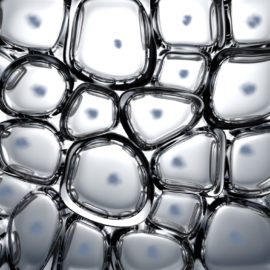Right now, 65% of Generation Z consumers in the UK say that the core of beauty is confidence (Mintel, 2019). Consumers are looking for beauty that spreads positivity, caring for the mind and body. Now, as the COVID-19 crisis continues, they want optimistic, inclusive campaigns that stand in contrast to the stress and anxiety associated with the pandemic. This is especially the case when it comes to body care; previously a segment that might have adhered to beauty ‘standards’, now brands should promote body positivity via effective products. Science will play a key role here, namely, via discoveries about adipocyte differentiation. Here, we’ll briefly outline these discoveries and how they can contribute to body-positive body care.
Content
The science of cellulite
Cellulite is a common concern for young women, affecting more than 85% of consumers over 20 years of age (Kruglikov, 2012). The appearance of cellulite is a result of subcutaneous fat, which accumulates due to the absorption of the free fatty acids and triglycerides.
Subcutaneous fat, or adipose tissue, predominantly comprises cells known as adipocytes, which accumulate lipids in their cytoplasm. Before, it was thought that adipocyte differentiation only resulted in two types of adipocytes, white and brown. In fact, several studies have demonstrated that there is a third type: beige adipocytes.
When they are inactive, their morphology is very similar to white adipocytes (unilocular, with few mitochondria and normal cell respiration). However, with suitable stimulus, the cells become multilocular with an elevated number of mitochondria, more akin to brown adipocytes.
This means that they become metabolically active, activating thermogenesis, which increases the burning of fatty acids to sustain increased respiration. This, in layman’s terms, stimulates a fat-burning effect. Studies have found that this can be triggered via various exogenous factors, such as cold, or by the ingestion of certain substances.
Ingredients to impact the result of adipocyte differentiation
One such ingredient is microalgae. Recent studies have found that certain microalgae can have diverse benefits for the human body. For example, the chemical structure of xanthophyll has been shown to decrease the risk of cardiovascular disease and cognitive decline, and certain cancers (Leermakers et al., 2016). Considering its potent bioactivity, researchers have investigated the compound’s benefits for other processes, namely, its effect on lipid metabolism, yielding intriguing results.
Inspired by this research, scientists at Provital created Lipout™. Obtained from the microalgae Tisochrysis lutea, this ingredient impacts the result of adipocyte differentiation due to its unique chemical structure. As part of in vitro studies, adipocytes from human subcutaneous adipose tissue were incubated with Lipout™ for the first seven days of development. This was followed by seven days of incubation in a standard differentiator medium until their complete maturation.
Researchers discovered that after this protocol, thermogenic gene expression increased by up to 2,094% at the highest Lipout™ concentration (0.56%), compared to the control. In in vivo studies, a cream gel with 3% Lipout™ was applied twice a day for two months, yielding impressive results. In women, subjects say a 1.4cm reduction in thigh circumference and a 1.3cm reduction in hip circumference on day 56.
Promote positivity with products that work
Body positivity is essential to confidence, and confidence is the key to beauty. Considering the pressures of modern life – not least the added sedentarism brought on by the pandemic – consumers are looking for more ways to look and feel confident.
Effective body care products are a valuable tool in this journey to greater positivity. Ingredients like Lipout™ act on the body at a cellular level, affecting the outcome of adipocyte differentiation and the behavior of adipocyte cells. With effective, scientifically proven ingredients like these, we can promote positivity and meet this demand from multiple perspectives.
No comments yet
There are no comments on this post yet.





Leave a comment